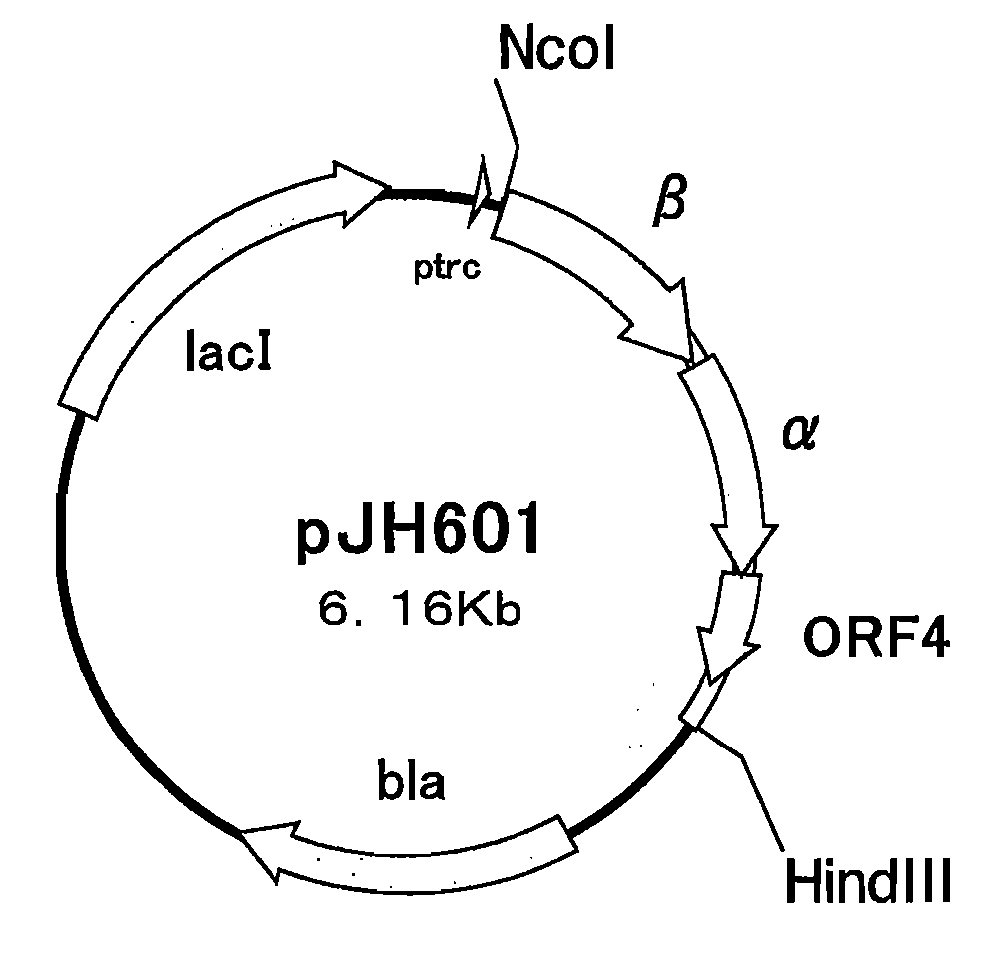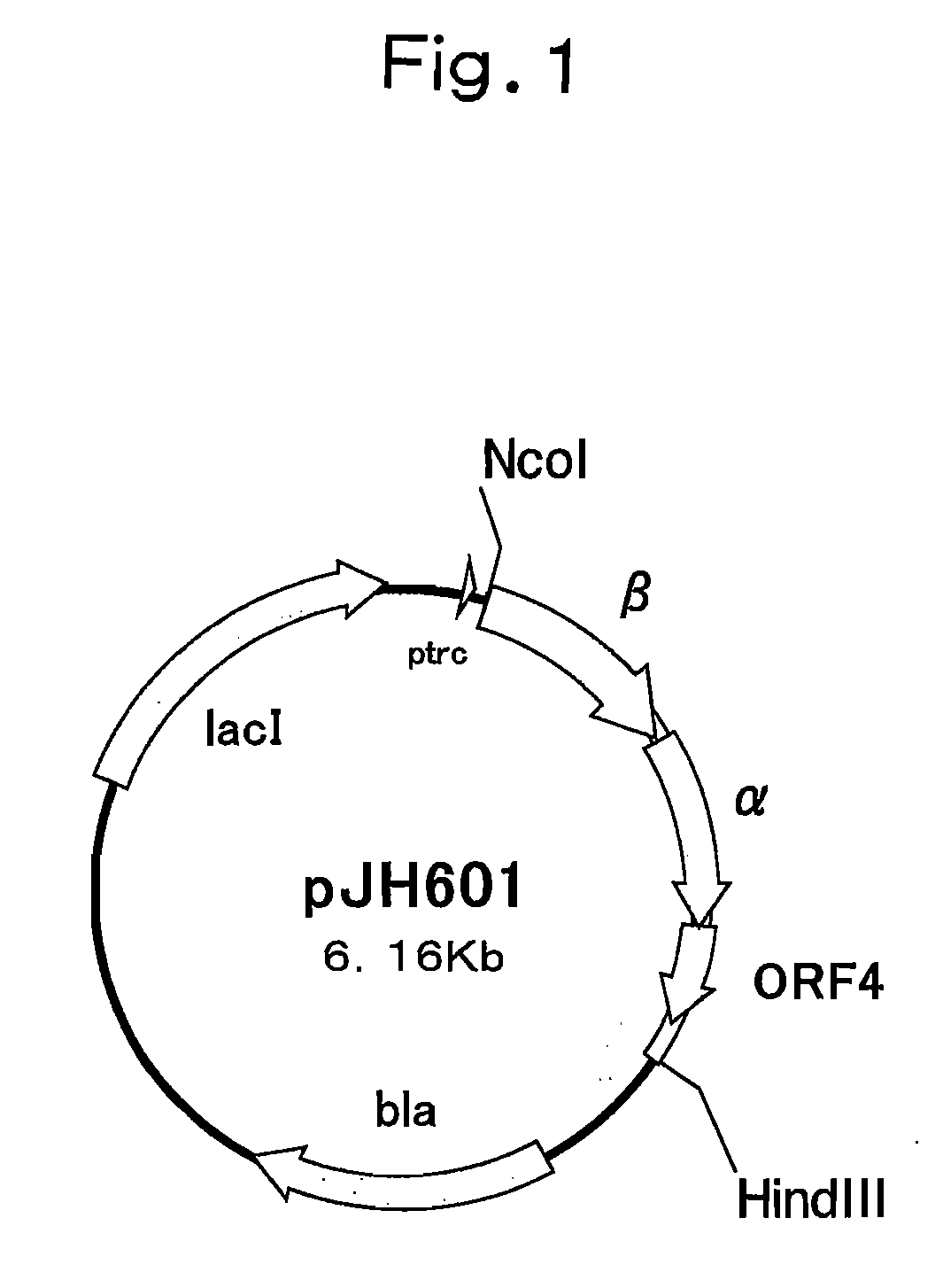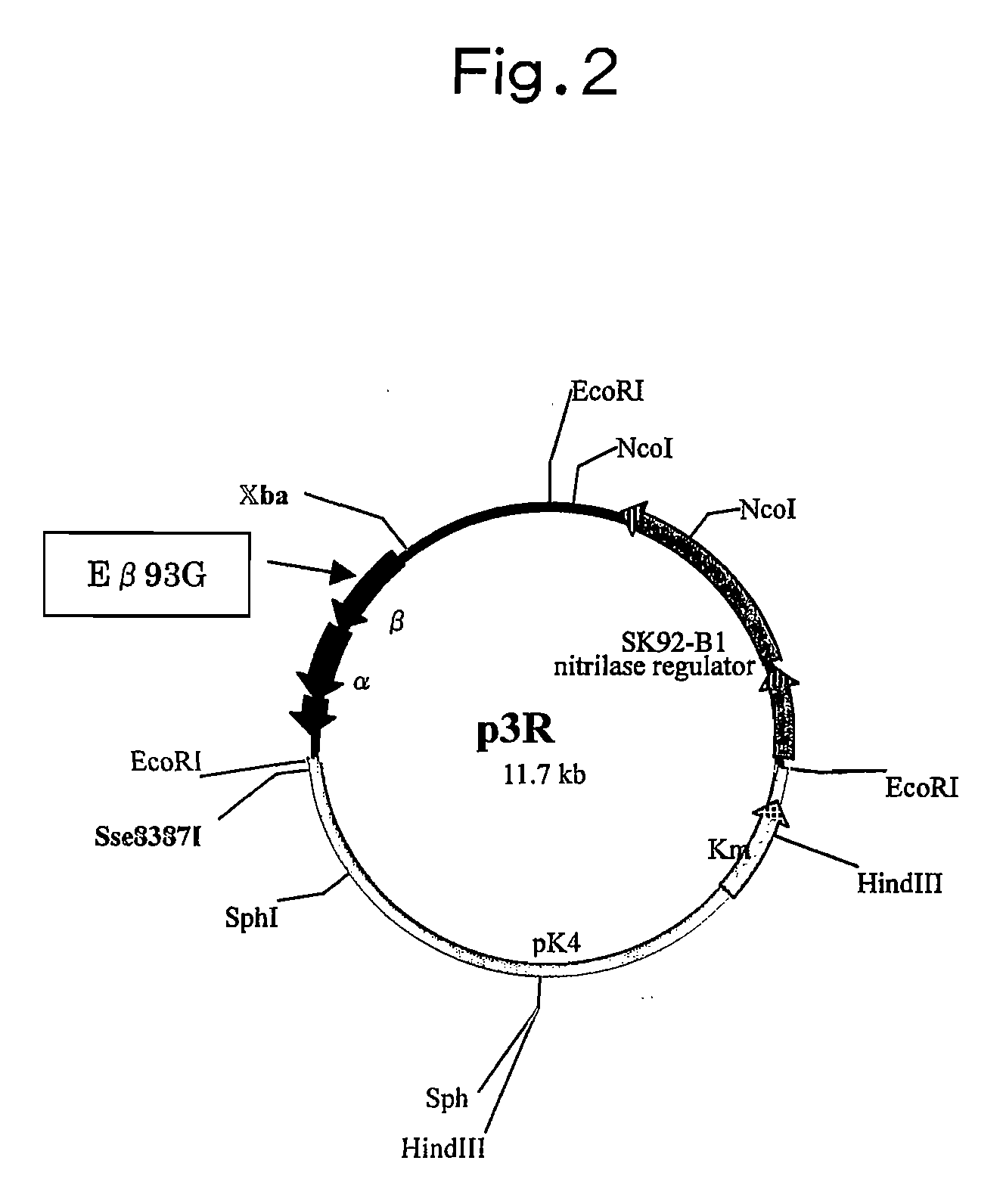Nitrile Hydratase
a hydratase and nitrile technology, applied in the field of proteins, can solve the problem that nitrile hydratase has a low reactivity to aromatic nitrile, and achieve the effect of efficient production of acrylamid
- Summary
- Abstract
- Description
- Claims
- Application Information
AI Technical Summary
Benefits of technology
Problems solved by technology
Method used
Image
Examples
example 1
Obtainment of Improved Nitrile Hydratase Gene (I)
[0133] (1) Preparation of Chromosomal DNA
[0134] The Rhodococcus rhodochrous J-1 strain was subjected to shaking culture at 30° C. for 72 hours in 100 ml of MYK medium (0.5% polypeptone, 0.3% Bacto-yeast extract, 0.3% Bacto-malt extract, 1% glucose, 0.2% K2HPO4, 0.2% KH2PO4, pH7.0).
[0135] After completion of the culture, cells were collected, and the obtained cell mass was then suspended in 4 ml of saline-EDTA solution (0.1 M EDTA, 0.15 M NaCl (pH8.0)). Thereafter, 8 mg of lysozyme was added to the obtained suspension, and the mixture was shaken at 37° C. for 1 to 2 hours. Thereafter, the resultant was frozen at −20° C.
[0136] Subsequently, 10 ml of Tris-SDS solution (1% SDS, 0.1 M NaCl, 0.1 M Tris-HCl (pH9.0)) was added thereto, while it was gently shaken. Thereafter, proteinase K (Merck) (final concentration: 0.1 mg) was added thereto, and the obtained mixture was then shaken at 37° C. for 1 hour.
[0137] Subsequently, an equal am...
example 2
Properties of Improved Nitrile Hydratase
[0157] JM109 was retransformed with the plasmid p3 obtained in Example 1 (JM109 / p3), and the obtained colony was cultured in LB medium (containing ampicillin, IPTG, and cobalt) at 37° C. overnight. A cell mass was recovered by centrifugation, and was then washed with a 50 mM phosphate buffer solution twice to obtain a cell mass suspension.
[0158] 0.5 ml of the obtained cell mass suspension was placed in a test tube, and it was incubated in a water bath at each temperature of 50° C., 55° C., and 60° C., for 5 to 20 minutes. Thereafter, it was cooled on ice.
[0159] The activity of the cell mass was measured by the method described in Example 1 (4).
[0160] JM109 / pJH601 was used as a control for comparison. The cell strain, which had not been subjected to a heat treatment and had been kept cold at 4° C., was defined as an untreated cell strain. The remaining activities of such strains were obtained. The results are shown in Table 2.
TABLE 250° ...
example 3
Production of Recombinant Rhodococcus Strain
[0162] The properties of the improved enzyme obtained in Example 1 were confirmed using a recombinant Rhodococcus strain.
[0163] (1) Construction of Plasmid Used for Introduction into Rhodococcus Strain
[0164] A plasmid having a mutation of p3 (Eβ93G) used for introduction into a Rhodococcus strain was produced by the following method. In order to introduce such a mutation, site-directed mutagenesis was applied, and a commercially available kit, QuikChange XL Site-Directed Mutagenesis Kit (Stratagene) was used. The experiment was carried out in accordance with an operation manual. As a template plasmid into which such a mutation be introduced, pSJ034 was used. Such pSJ034 is a plasmid that allows nitrile hydratase to express in a Rhodococcus strain. The plasmid pSJ034 was produced from pSJ023 by the method described in Japanese Patent Application Laid-Open No. 10-337185. It is to be noted that pSJ023 was deposited as a transformant “R. r...
PUM
| Property | Measurement | Unit |
|---|---|---|
| temperature | aaaaa | aaaaa |
| temperature | aaaaa | aaaaa |
| temperature | aaaaa | aaaaa |
Abstract
Description
Claims
Application Information
 Login to View More
Login to View More - R&D
- Intellectual Property
- Life Sciences
- Materials
- Tech Scout
- Unparalleled Data Quality
- Higher Quality Content
- 60% Fewer Hallucinations
Browse by: Latest US Patents, China's latest patents, Technical Efficacy Thesaurus, Application Domain, Technology Topic, Popular Technical Reports.
© 2025 PatSnap. All rights reserved.Legal|Privacy policy|Modern Slavery Act Transparency Statement|Sitemap|About US| Contact US: help@patsnap.com



